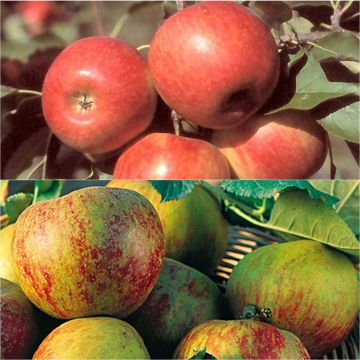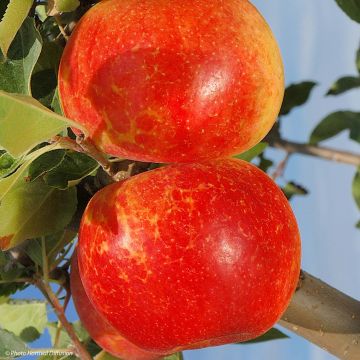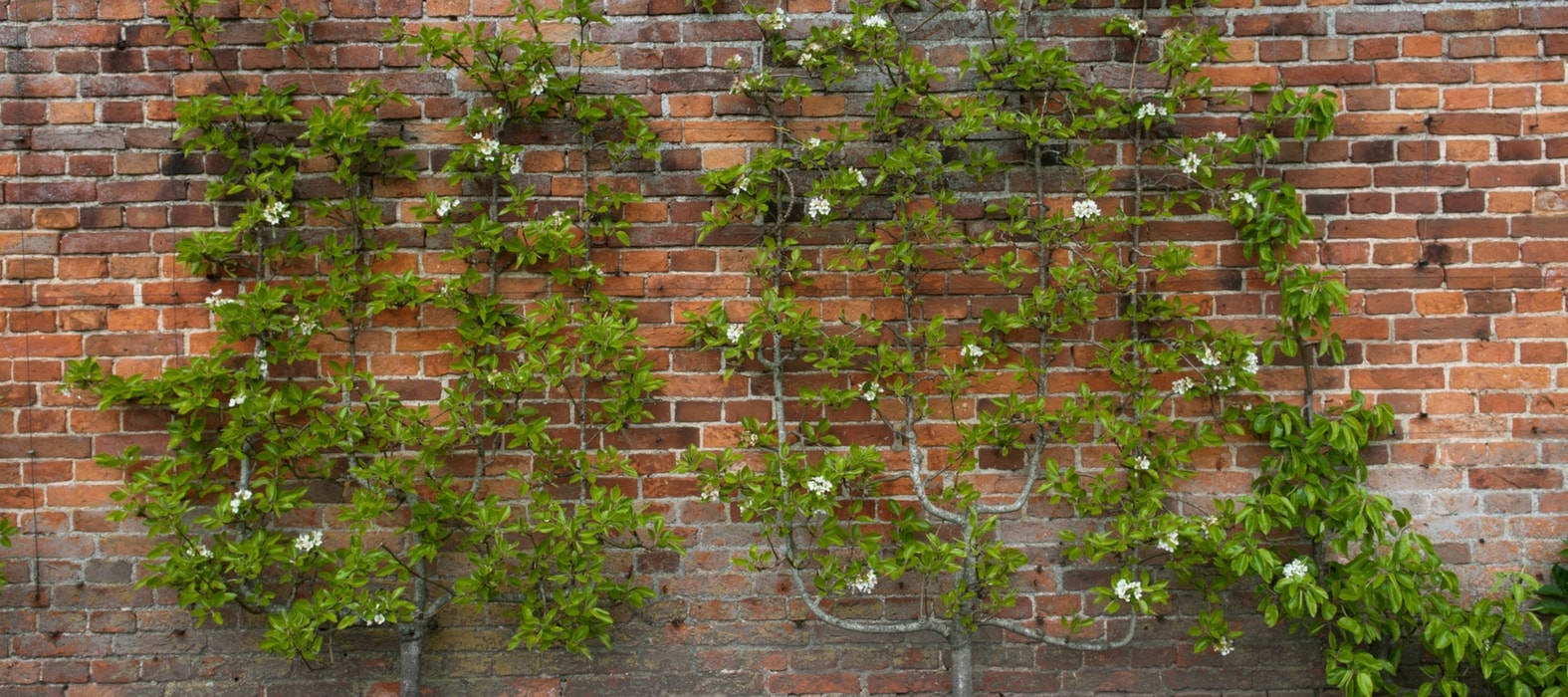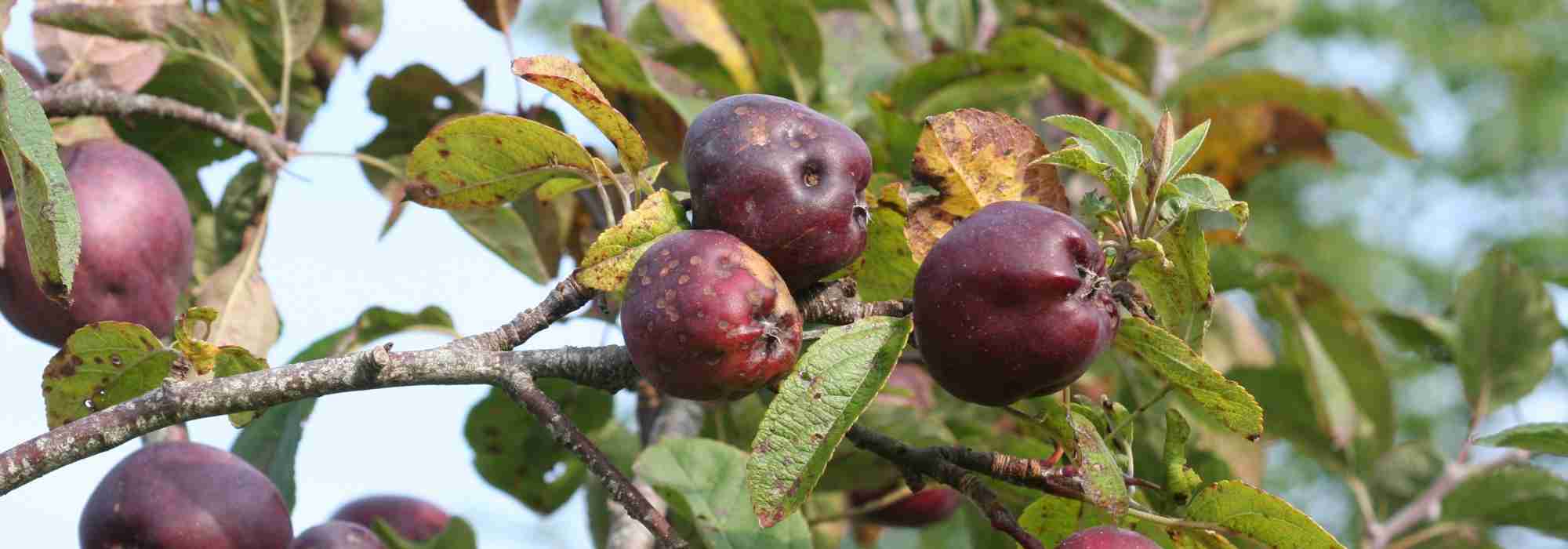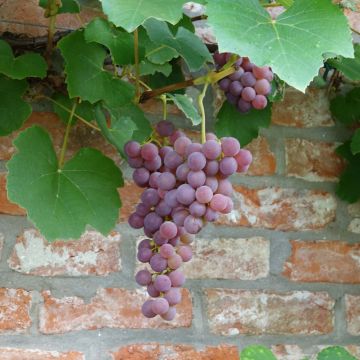

Apple Tree Belle fille de l'Indre - Malus domestica
Apple Tree Belle fille de l'Indre - Malus domestica
Malus domestica Belle fille de l'Indre
Apple, Orchard apple
Special offer!
Receive a €20 voucher for any order over €90 (excluding delivery costs, credit notes, and plastic-free options)!
1- Add your favorite plants to your cart.
2- Once you have reached €90, confirm your order (you can even choose the delivery date!).
3- As soon as your order is shipped, you will receive an email containing your voucher code, valid for 3 months (90 days).
Your voucher is unique and can only be used once, for any order with a minimum value of €20, excluding delivery costs.
Can be combined with other current offers, non-divisible and non-refundable.
Why not try an alternative variety in stock?
View all →This plant carries a 6 months recovery warranty
More information
We guarantee the quality of our plants for a full growing cycle, and will replace at our expense any plant that fails to recover under normal climatic and planting conditions.
Description
Malus domestica 'Belle fille de l'Indre' is a very old variety of Apple tree, still appreciated for the taste of its fruits and their good suitability for winter storage. This highly productive tree produces a large quantity of medium to large-sized fruits. Their beautiful yellow skin, largely marked with red, protects a firm and juicy white flesh, sweet and delicately fragrant. It is a delicious apple for eating fresh and also produces very good juice. Edible from November, they can be stored in good condition until April-May. Hardy and easy to cultivate, the tree is self-sterile and therefore needs to be planted near a pollinator to bear fruit.
The Apple tree is a member of the rich Rosaceae family, which encompasses many other fruit genera (Apricot trees, Cherry trees, Raspberry bushes...), numerous wild species from forests and countryside, as well as a multitude of ornamental plants, including of course Roses. The Malus genus comprises around forty species, including the Common Apple, Malus domestica (synonyms, Malus communis or Malus pumila). Cultivated since ancient times (the Romans already had 29 different varieties), this tree now comes in approximately 20,000 varieties.
'Belle fille de l'Indre' has very ancient origins, likely before 1600, and with uncertain origins, although it is thought to be from close to Creuse and Haute-Vienne. It forms a spreading tree, reaching approximately 5 m in height and 4 m in spread at maturity. The branches are adorned with large ovate leaves, medium to dark green on the upper side and whitish green on the underside. Its late flowering occurs in May, which is an advantage against the risk of late frosts from which it is normally spared. The white flowers are charming in spring and are honey-bearing and nectar-rich, which is also a good point for the wildlife, including bees. However, its poor-quality pollen renders it self-sterile, necessitating the planting of another tree nearby flowering at the same time, which will act as a pollinator. Varieties well-suited for cross-pollination include: Court Pendu, Jacques Lebel, Jonathan, Reine des Reinettes, Reinette du Mans, Reinette Etoilée, Reinette du Canada blanc, Winston or any other late-flowering variety. Once fertilised, the flowers will develop into beautiful apples of excellent taste. This highly productive apple tree tends to produce numerous fruits, which can affect the size of the fruits if thinning is not carried out to reduce the apple load. The size will therefore vary from medium to large, yielding yellow apples, largely streaked with red, with a smooth, thin, and shiny skin. The white flesh is both firm and sweet, with no acidity, juicy and sugary. The harvest occurs in October-November and the fruit is excellent for eating fresh, while also being able to be stored until the following spring. It also produces excellent juice and can be cooked into compotes and desserts.
Very productive, rather resistant to bacterial canker, powdery mildew, and scab, the 'Belle fille de l'Indre' Apple tree will delight enthusiasts of old varieties. You could plant it alongside other ancient fruit trees, such as the famous Pear tree 'Beurré Hardy', from the early 19th century, which will delight you with its smooth-skinned fruits of characteristic bronzed green. The Mirabelle de Nancy, imported from the Caucasus by King René, has been widely cultivated since the 16th century and its yellow fruits will tempt you. It is not just trees that bear fruit, also consider grapes, particularly 'Chasselas Doré', known and appreciated for several centuries for its generous, delicious clusters. Bushes are not to be overlooked either, and among the small fruits, the Blackcurrant bush from Burgundy, traditionally used for Dijon Kir, will have a place in your garden of flavours.
Plant habit
Fruit
Flowering
Foliage
Botanical data
Malus
domestica
Belle fille de l'Indre
Rosaceae
Apple, Orchard apple
Cultivar or hybrid
Other Apple trees
View all →Planting and care
Choose a sunny spot for your Apple tree 'Belle fille de l'Indre' ; the soil can be slightly calcareous or acidic, but not excessively so. Dig a wide planting hole at least three times the volume of the root ball. Incorporate organic matter (potting soil, compost...) and a base fertiliser such as crushed horn at the same time. Do not bury the grafting collar. Stake if necessary. For apple trees planted in isolation and in open conditions, it may be beneficial to stake them by installing a guying system: plant 3 stakes in a triangle 50 cm around the trunk and connect them with pieces of wood. Protect the bark with a piece of rubber, for example, and attach the stakes to the trunk with metal wires. Water generously, even in winter, even if it rains. Fruit trees are ideally planted between October and March, outside of frost periods. Containerised plants can be planted all year round, except during periods of extreme heat or frost.
In winter, at the base of the tree and lightly incorporated into the surface of the soil, you can add a small handful of wood ash, rich in potash, which will improve fruiting. The Apple tree can be susceptible to various diseases and pests. To limit risks, space the trees sufficiently, plant multi-species hedges, nesting boxes or insect hotels to attract beneficial organisms. In summary: favour diversity. The main diseases affecting the Apple tree are scab (brown spots on the leaves), brown rot (drying of flowers and rotting of fruits on the tree), and powdery mildew (white fluff on the leaves). For these three cases, preventive action is preferred by spraying a horsetail decoction; as a last resort and during severe attacks, you can apply a treatment based on Bordeaux mixture. Regarding pests, the codling moth (or fruit worm) is a small caterpillar which causes tunnels inside the fruit. To remedy this, it is advisable to act preventively by encouraging birds and bats by placing nesting boxes. In the event of an aphid attack, spray a solution based on black soap.
During the harvest in September, only keep the fruits that have been picked. For good storage, it is advisable to place the apple with its stalk facing down, in trays or crates. Choose a spot that is preferably completely dark, dry, and cool, but frost-free.
Planting period
Intended location
Care
Planting & care advice
This item has not been reviewed yet - be the first to leave a review about it.
Similar products
Haven't found what you were looking for?
Hardiness is the lowest winter temperature a plant can endure without suffering serious damage or even dying. However, hardiness is affected by location (a sheltered area, such as a patio), protection (winter cover) and soil type (hardiness is improved by well-drained soil).

Photo Sharing Terms & Conditions
In order to encourage gardeners to interact and share their experiences, Promesse de fleurs offers various media enabling content to be uploaded onto its Site - in particular via the ‘Photo sharing’ module.
The User agrees to refrain from:
- Posting any content that is illegal, prejudicial, insulting, racist, inciteful to hatred, revisionist, contrary to public decency, that infringes on privacy or on the privacy rights of third parties, in particular the publicity rights of persons and goods, intellectual property rights, or the right to privacy.
- Submitting content on behalf of a third party;
- Impersonate the identity of a third party and/or publish any personal information about a third party;
In general, the User undertakes to refrain from any unethical behaviour.
All Content (in particular text, comments, files, images, photos, videos, creative works, etc.), which may be subject to property or intellectual property rights, image or other private rights, shall remain the property of the User, subject to the limited rights granted by the terms of the licence granted by Promesse de fleurs as stated below. Users are at liberty to publish or not to publish such Content on the Site, notably via the ‘Photo Sharing’ facility, and accept that this Content shall be made public and freely accessible, notably on the Internet.
Users further acknowledge, undertake to have ,and guarantee that they hold all necessary rights and permissions to publish such material on the Site, in particular with regard to the legislation in force pertaining to any privacy, property, intellectual property, image, or contractual rights, or rights of any other nature. By publishing such Content on the Site, Users acknowledge accepting full liability as publishers of the Content within the meaning of the law, and grant Promesse de fleurs, free of charge, an inclusive, worldwide licence for the said Content for the entire duration of its publication, including all reproduction, representation, up/downloading, displaying, performing, transmission, and storage rights.
Users also grant permission for their name to be linked to the Content and accept that this link may not always be made available.
By engaging in posting material, Users consent to their Content becoming automatically accessible on the Internet, in particular on other sites and/or blogs and/or web pages of the Promesse de fleurs site, including in particular social pages and the Promesse de fleurs catalogue.
Users may secure the removal of entrusted content free of charge by issuing a simple request via our contact form.
The flowering period indicated on our website applies to countries and regions located in USDA zone 8 (France, the United Kingdom, Ireland, the Netherlands, etc.)
It will vary according to where you live:
- In zones 9 to 10 (Italy, Spain, Greece, etc.), flowering will occur about 2 to 4 weeks earlier.
- In zones 6 to 7 (Germany, Poland, Slovenia, and lower mountainous regions), flowering will be delayed by 2 to 3 weeks.
- In zone 5 (Central Europe, Scandinavia), blooming will be delayed by 3 to 5 weeks.
In temperate climates, pruning of spring-flowering shrubs (forsythia, spireas, etc.) should be done just after flowering.
Pruning of summer-flowering shrubs (Indian Lilac, Perovskia, etc.) can be done in winter or spring.
In cold regions as well as with frost-sensitive plants, avoid pruning too early when severe frosts may still occur.
The planting period indicated on our website applies to countries and regions located in USDA zone 8 (France, United Kingdom, Ireland, Netherlands).
It will vary according to where you live:
- In Mediterranean zones (Marseille, Madrid, Milan, etc.), autumn and winter are the best planting periods.
- In continental zones (Strasbourg, Munich, Vienna, etc.), delay planting by 2 to 3 weeks in spring and bring it forward by 2 to 4 weeks in autumn.
- In mountainous regions (the Alps, Pyrenees, Carpathians, etc.), it is best to plant in late spring (May-June) or late summer (August-September).
The harvesting period indicated on our website applies to countries and regions in USDA zone 8 (France, England, Ireland, the Netherlands).
In colder areas (Scandinavia, Poland, Austria...) fruit and vegetable harvests are likely to be delayed by 3-4 weeks.
In warmer areas (Italy, Spain, Greece, etc.), harvesting will probably take place earlier, depending on weather conditions.
The sowing periods indicated on our website apply to countries and regions within USDA Zone 8 (France, UK, Ireland, Netherlands).
In colder areas (Scandinavia, Poland, Austria...), delay any outdoor sowing by 3-4 weeks, or sow under glass.
In warmer climes (Italy, Spain, Greece, etc.), bring outdoor sowing forward by a few weeks.


































